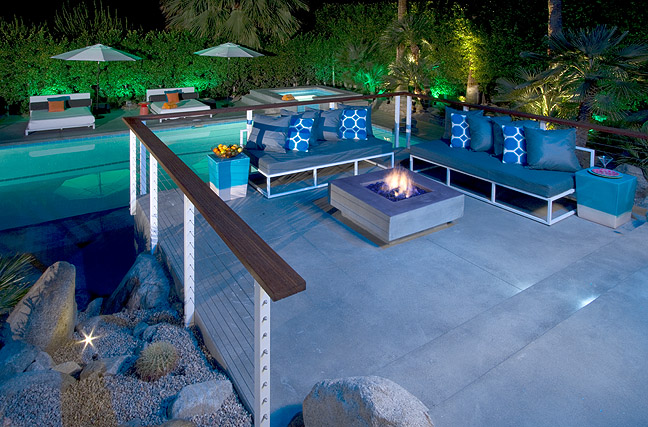



Understanding Mounting Types and Different Style Options for Wall mounted Fences and Railings- Wall mounted fences and railings can offer some questions and challenges when it comes to rigidity. A good connection to solid structural masonry units is ideal. Here are a few common installation scenarios we have encountered, and some solutions for a successful end product. Block Walls- Cinder block walls are the most commonly encountered masonry fences and curbs in residential construction. Fences can usually be surface mounted or fascia mounted to a solid block wall. If the wall is hollow; the cells which support the fence post should be grouted solid. If the wall is capped like the one in our feature photo; the anchoring should penetrate past the wall caps into the solid wall. Threaded rods that are epoxied into the wall will function well. In addition, a variety of masonry anchors are suitable for mounting railing posts on to masonry walls. Keystone Blocks– Keystone blocks are very appealing to DIYers because of affordability and their easily stackable design. The blocks come in a variety of sizes and stack on top of each other. Keystone blocks are held in place by a lip on each block and the backfill pressure against the blocks. Keystone blocks are not typically a good choice for top mounted fence and railing posts because the top block can move. Fences and railings should be cast into concrete footings utilizing the compacted fill behind keystone walls for best results. Footing depth can vary for these types of installs. To learn more about keystone block walls- gardenclub.homedepot.com/build-a-retaining-wall-with-landscape-blocks/ Pony Walls- Also called knee walls, pony walls can be found inside and outside the house. They are typically wood framed and veneered in drywall (inside) or stucco, stone, tile (outside). Knee walls can be a great mounting frame for fence and railing posts. The most important considerations are the framing thickness and waterproofing. Pony wall top plates should have a 3″ net thickness in order to offer a good lag bolt connection. If a fascia mount is desired; wood blocks should be installed at the post locations. Wooden framing members should be properly wrapped (waterproofed) in order to prevent water intrusion. Sealant should be used on all bolt threading and around the plates when installing the fence posts. Wall mounted fences and railings can be a beautiful improvement to interior and exterior spaces. If you have questions, our pros are here to help. 844-277-7327 (SDCR)

Cable Railing Pool Fencing projects have recently become a more common design element to compliment exterior remodeling projects. As the desire for a minimalistic style gains popularity, stainless cable for pool fencing provides a transparent barrier that is much more attractive than wooden or composite pickets. Pickets and picket fencing have become dated and technology has rapidly improved fencing and railing systems. We have more choices today, and we have superior choices for durability and maintenance. Stainless steel cable fencing has become a staple in the construction and remodeling industries, but when it comes to pools does it satisfy barrier standards? The answer to this question is most commonly YES! At San Diego Cable Railings we have provided both product and preferred contractor installations for cable railings as pool fencing. Most of our experience has come from Californian municipalities and customers must ALWAYS check local codes and building departments prior to installing cable railing pool fencing. Despite stringent standards in previous years, most cities have adapted to the popularity of cable railings and fences and our customers are having great success with cable fencing packages. Pool fencing standards differ from railings in several ways but the main difference is height. Pool barriers are commonly 48″-60″ and will require more cables and possibly sturdier framing than a standard 36″ or 42″ cable railing system. Cable fences require 3″ cable spacing to avoid a 4″ spread which causes the need for more cables as the fence gets taller. Additionally pool fencing projects usually require self closing gates and a continuous perimeter either around the pool or the entire yard. At San Diego Cable Railings we provide customized cable fencing packages and stainless steel cable gates for pool projects. Pools are a beautiful addition to any landscape and a large investment that should be enjoyed and unobstructed. Poolside decks are another great place to utilize cable railing systems. If you have questions or would like a quote for cable fencing, please visit the quote request page or call us at 844-277-7327